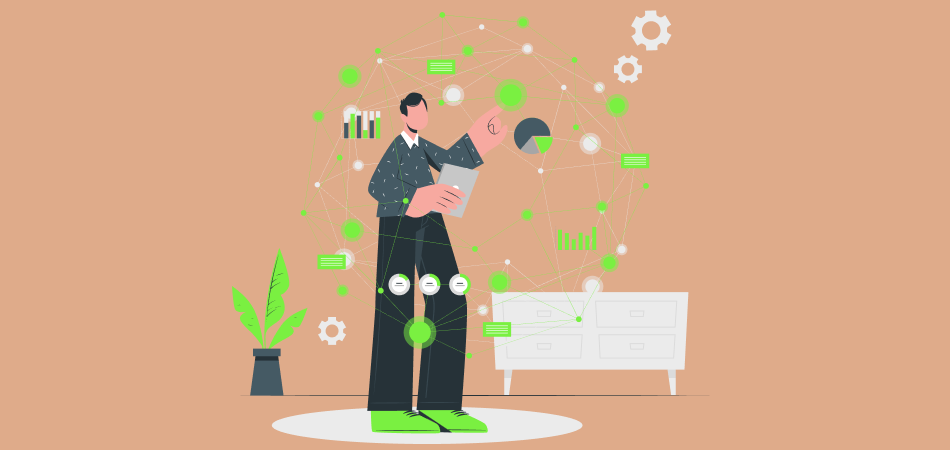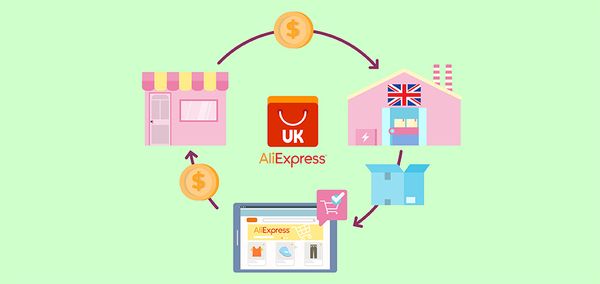Beginner's Guide to What POS Is & How a POS Works

"POS" stands for "Point of Sale", which refers to the specific location or point where a transaction is completed in a business context. The POS systems have evolved from simple cash register to a sophisticated software and hardware solution that can transform the way businesses manage operations, enhance customer experiences, and gain valuable data-driven insights. Whether you're running a small retail store, a bustling restaurant, or a large ecommerce enterprise, understanding the fundamentals of POS systems is crucial for the success and efficiency of your business. In this beginner's guide, we will explore the definition of what POS is, how it works, and the key reasons why businesses should consider implementing one.
What Does POS Mean
The acronym "POS" stands for "Point of Sale", which in the business context, refers to the specific location or point where a transaction is completed. This can include a checkout counter, a register, or a mobile device used to accept payments.
A POS (Point-of-Sale) system is a combination of software and hardware that enables businesses to efficiently manage the sales process, from accepting payments to managing inventory and generating reports. POS systems are designed to streamline the transaction process, improve accuracy, and provide a seamless experience for both customers and employees.
This integrated system streamlines operations, enhances customer experiences, and provides valuable data-driven insights to support business decision-making. By leveraging the capabilities of a POS system, organizations can improve productivity, reduce errors, and gain greater control over their inventory and financial records.
How Does a POS Work
Here's a typical workflow of how a POS system operates:
Item Entry
When a customer purchases an item, the employee scans the product's barcode or manually enters the item details into the POS system. The system then retrieves the corresponding product information, such as the price, description, and any applicable discounts or promotions.
Payment Processing
The customer can then make a payment using cash, credit/debit card, or other accepted payment methods. The POS system communicates with the payment processor to securely authorize and complete the transaction.

|
Adapt Your Product Prices Automatically DSers Automatic Pricing - Pre-set Pricing Rule to mark-up your product price automatically |
Transaction Recording
The POS system records the details of the sale, including the items purchased, the payment method, the total amount, and any other relevant information. This data is then stored in the system's database for future reference and analysis.
Inventory Management
As items are sold, the POS system automatically updates the inventory levels, ensuring that the business always has an accurate understanding of the available stock. This information can be used to generate reports, set reorder points, and make informed purchasing decisions.
Reporting and Analytics
The POS system's robust reporting and analytics features allow business owners and managers to generate a wide range of reports, such as sales figures, customer spending patterns, and employee performance metrics. These insights can be used to make data-driven decisions, optimize operations, and improve overall business performance.
Customer Relationship Management
Many POS systems integrate with customer relationship management (CRM) tools, enabling businesses to store customer information, track purchase history, and implement loyalty programs.
By seamlessly integrating these various functionalities, a POS system empowers businesses to streamline their operations, improve efficiency, and make data-driven decisions to drive growth and success.
Why Use a POS System
Implementing a POS system offers numerous benefits for businesses of all sizes, from small retail stores to large restaurant chains. Here are some of the key reasons why using a POS system can be a game-changer for your business:
Streamlined Sales Processes
POS systems automate and optimize the sales workflow, minimizing the time and effort required to complete transactions. This allows employees to devote more attention to delivering excellent customer service, rather than getting bogged down in manual, time-consuming tasks.
Real-Time Inventory Management
POS systems offer businesses real-time visibility into their inventory levels, allowing them to avoid stockouts and make more informed purchasing decisions. This helps ensure that the right products are consistently available to meet customer demand.

|
Tracking Number with Auto Sync Auto Sync Tracking Numbers - Automatically sync the tracking number from AliExpress to your store |
Enhanced Reporting and Analytics
The comprehensive reporting and analytics capabilities of POS systems give you valuable insights into your business performance, customer behavior, and sales trends. The data-driven nature of a POS system empowers businesses to make more informed decisions and optimize their operations.
Secure Payment Processing
POS systems integrate with payment processors to securely handle credit/debit card transactions, reducing the risk of fraud and ensuring compliance with industry regulations.
Improved Customer Experience
A well-designed POS system can provide a seamless and enjoyable checkout experience for customers, leading to higher customer satisfaction and loyalty.
Employee Management and Productivity
POS systems often include features for tracking employee schedules, sales performance, and time-keeping, allowing you to better manage and incentivize your team.
Hardware and Software of POS System
As mentioned earlier, a POS system is composed of both hardware and software components that work together to provide a comprehensive solution for businesses. Let's take a closer look at the key hardware and software elements that make up a POS system.
Hardware Components
The hardware components of a POS system are the physical devices and peripherals that facilitate the sales and transaction processes. These typically include:
- Computer or Tablet: The central processing unit of the POS system, which can be a traditional desktop computer, a touchscreen tablet, or a specialized POS terminal.
- Cash Drawer: A secure cash storage compartment that opens when a sale is completed or when the employee needs to access cash.
- Barcode Scanner: A device used to quickly and accurately read product barcodes, streamlining the checkout process.
- Card Reader: A device that enables customers to make payments using credit or debit cards, either by swiping, inserting, or tapping the card.
- Receipt Printer: A printer that generates customer receipts, often with the option to include branding, promotions, or other relevant information.
- Customer Display: A separate display that allows customers to view the transaction details, such as the items purchased and the total amount due.
- Weighing Scale: For businesses that sell items by weight, such as produce or deli items, a weighing scale is an essential hardware component.
- Kitchen Display System (KDS): In the restaurant industry, a KDS is used to display order information in the kitchen, helping streamline the food preparation process.
The specific hardware components required for a POS system can vary depending on the type of business, the size of the operation, and the unique needs of the organization.
Software Components
The software component of a POS system is the backbone that ties all the hardware elements together and provides the necessary functionality. POS software shares typical features such as:
- Inventory Management: Tracking and managing product stock levels, reorder points, and supplier information.
- Sales Tracking: Recording and analyzing sales data, including transaction details, customer information, and sales trends.
- Reporting and Analytics: Generating reports on sales, revenue, customer behavior, and other key performance indicators to support business decision-making.
- Employee Management: Tracking employee schedules, time-keeping, and sales performance.
- Customer Relationship Management (CRM): Storing customer information, managing loyalty programs, and facilitating targeted marketing efforts.
- Online Ordering and Delivery Integration: Enabling customers to place orders online and integrating with delivery service providers.
- Multi-Location Management: Allowing businesses with multiple locations to centrally manage their operations, inventory, and reporting.
- Payment Processing Integration: Seamlessly integrating with payment processors to facilitate secure and efficient transactions.
The POS software can be cloud-based, installed locally on the POS hardware, or a combination of both, depending on the specific needs and preferences of the business. The choice between a cloud-based or on-premises solution often depends on factors such as the size of the business, the reliability of internet connectivity, and the need for offline functionality.
Pros and Cons of POS System
While the benefits of implementing a POS system are significant, it's important to also consider the potential drawbacks and challenges that come with adopting this technology.
- Improve Efficiency and Productivity: POS systems streamline the sales process, reduce errors, and free up employees to focus on higher-value tasks, leading to increased productivity and a smoother customer experience.
- Enhance Inventory Management: With real-time tracking of stock levels, sales trends, and purchase history, POS systems enable businesses to make more informed decisions about inventory, reducing stockouts and excess inventory.
- Offer Reporting and Analytics: POS software provides comprehensive data and insights that can inform strategic decisions, optimize operations, and identify growth opportunities.
- Increase Security and Fraud Prevention: Many POS systems incorporate features like secure payment processing, employee access controls, and detailed transaction records to mitigate the risk of theft or fraud.
- Improve Customer Experience: POS systems can facilitate faster checkout times, personalized interactions, and the ability to offer loyalty programs or other customer-centric features.
- Integrate with Other Business Systems: POS systems can often integrate with accounting, e-commerce, and other software, providing a more holistic view of the business and streamlining operations.
- Initial Cost: Adopting a POS system often requires a substantial upfront investment, covering the costs of hardware, software, installation, and employee training.
- Ongoing Maintenance and Updates: POS systems require regular software updates, hardware maintenance, and technical support.
- Potential for Technical Issues: Like any technology, POS systems can experience downtime, connectivity problems, or software glitches.
- Learning Curve for Employees: Transitioning to a new POS system can require time and effort for employees to learn the new software and processes.
Conclusion
After reading the article 'what is pos', you have known that a well-designed POS system has become essential for organizations of all sizes. By integrating hardware and software components, POS systems streamline sales, enhance customer experiences, and provide valuable data insights. Investing in the right POS solution can unlock a world of opportunities, from improved operational efficiency to better-informed strategic decisions. The key is to select a POS system that aligns with your specific business requirements, industry, and long-term goals.












 Company
Company
 Why Choose DSers
Why Choose DSers
 Blog
Blog
 Help Center
Help Center




 Live Chat
Live Chat